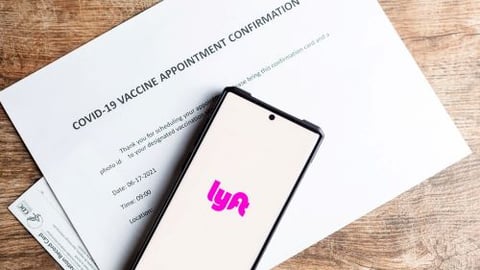Kroger Makes Strides Toward Its ‘Seamless Ecosystem’ in Q2
If The Kroger Co.’s second quarter results are any indication, the company is continuing to build sales by investing in and executing across more channels to provide core products and more digital solutions as consumer needs shift and inflation creeps. As the retailer aims to be present at points of decision for a wide swath of shoppers, it is also working with a broader range of partners, including suppliers, cohorts and service providers of varying sizes and scopes.
That’s a key takeaway from Kroger’s Q2 report out, released on Sept. 10. Among other updates, the report emphasized the retailer’s focus on simultaneously building internal brands and pursuing external relationships for the benefit of consumers and all engaged partners.
From a corporate angle, Kroger introduced a new brand icon in the second quarter to unite the Kroger family of companies under one visual, and expanded its private label line to include at least 142 new items. The retailer also announced an accelerator program to introduce local and regionally sourced products to stores around the country. For its digital business, Kroger expanded pickup and delivery locations to cover 98% of its banners’ households and rolled out a new Delivery Savings Pass in Florida to offer shoppers there unlimited delivery for $79 a year.
At the same time, and recognizing that its desired retail ecosystem requires interconnected and interactive partners, Kroger is expanding with partners outside the traditional grocery realm. For example, the company teamed up with a ghost kitchen partner during the second quarter on a new service that provides customers with on-demand meal pickup and delivery from popular restaurants and also started a sushi delivery pilot program with DoorDash in three geographical areas.
Financial Results
While its strategy of building across more channels requires a level of investment, Kroger posted modest gains in second quarter, with total company sales for the quarter at $31.7 billion, up from $30.5 billion during the second quarter of its fiscal 2020. On a two-year stacked basis (i.e. pre-pandemic FY2019), identical sales (without fuel) were up a healthy 14%.
Meanwhile, as the retailer continues to ramps up its digital capabilities, the results for second quarter bore out the team effort. Digital sales more than doubled during the quarter, up 114%.
"Our strategic focus on leading with fresh and accelerating with digital continues to build momentum across our business. Kroger's seamless ecosystem is working. This was evident during the quarter as we saw customers seamlessly shift between channels, and we continued to see strong digital engagement. Customers are eating more food at home because it is more affordable, convenient, and healthier than other options,” said Chairman and CEO Rodney McMullen.
Lifts in sales, buffeted by the pursuit of innovation and technology, spurred Kroger to raise its full-year guidance, with an expected two-year identical stales stack in the range of 12.6% to 13.1% and adjusted net earnings per diluted share from $3.25 to $3.35. "We are emerging stronger through the pandemic and are confident in our ability to deliver sustainable earnings growth and total shareholder return,” added Gary Millership, CFO.
That said, Millership acknowledged the effects of inflation during the company's earnings call and predicted that inflation for the full year will be higher than originally anticipated. "For the second half of 2021, our guidance now assumes inflation of between 2% and 3%," he said. "Recognizing recent inflation trends and our outlook for the rest of the year, we recorded a higher LIFO (last in, first out) charge for the quarter of $47 million compared to $23 million in the prior year."
Workforce and ESG Progress
As Kroger shores up its multichannel network to stay competitive with rival retailers like Walmart, Target and Amazon, the company is also strengthening its human infrastructure. In a quarter marked by acute labor shortages across and beyond the grocery sector, Kroger increased average hourly wages to more than $16, introduced a new technology-enabled front-line assisted training program to enhance engagement and retention and added benefits like a new live virtual event on mental health.
On a broader basis, the company continues to help consumers navigate through the pandemic with greater access to vaccinations and the availability of at-home rapid COVID-19 tests. During the second quarter, Kroger also released its latest ESG report, outlining and assessing its goals to create a more resilient, equitable food system.
Cincinnati-based Kroger is No. 3 on The PG 100, Progressive Grocer’s 2021 list of the top food and consumables retailers in North America.






